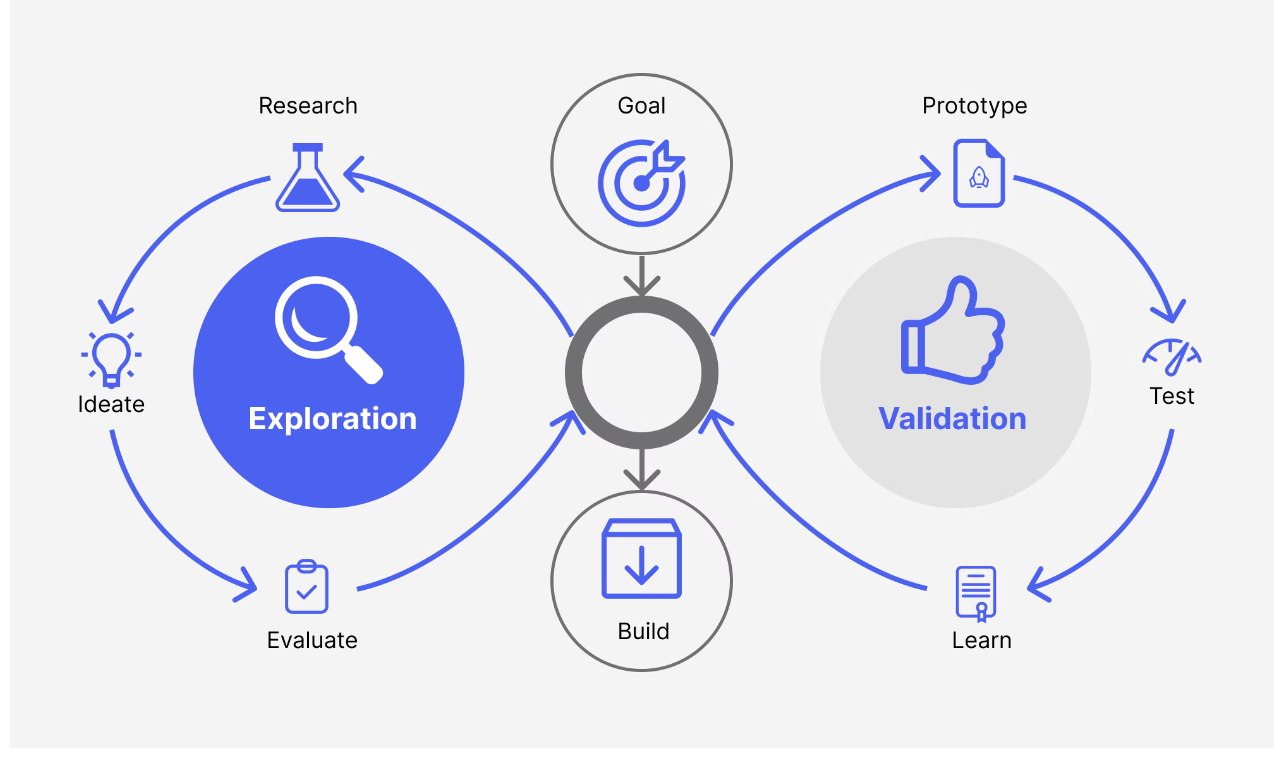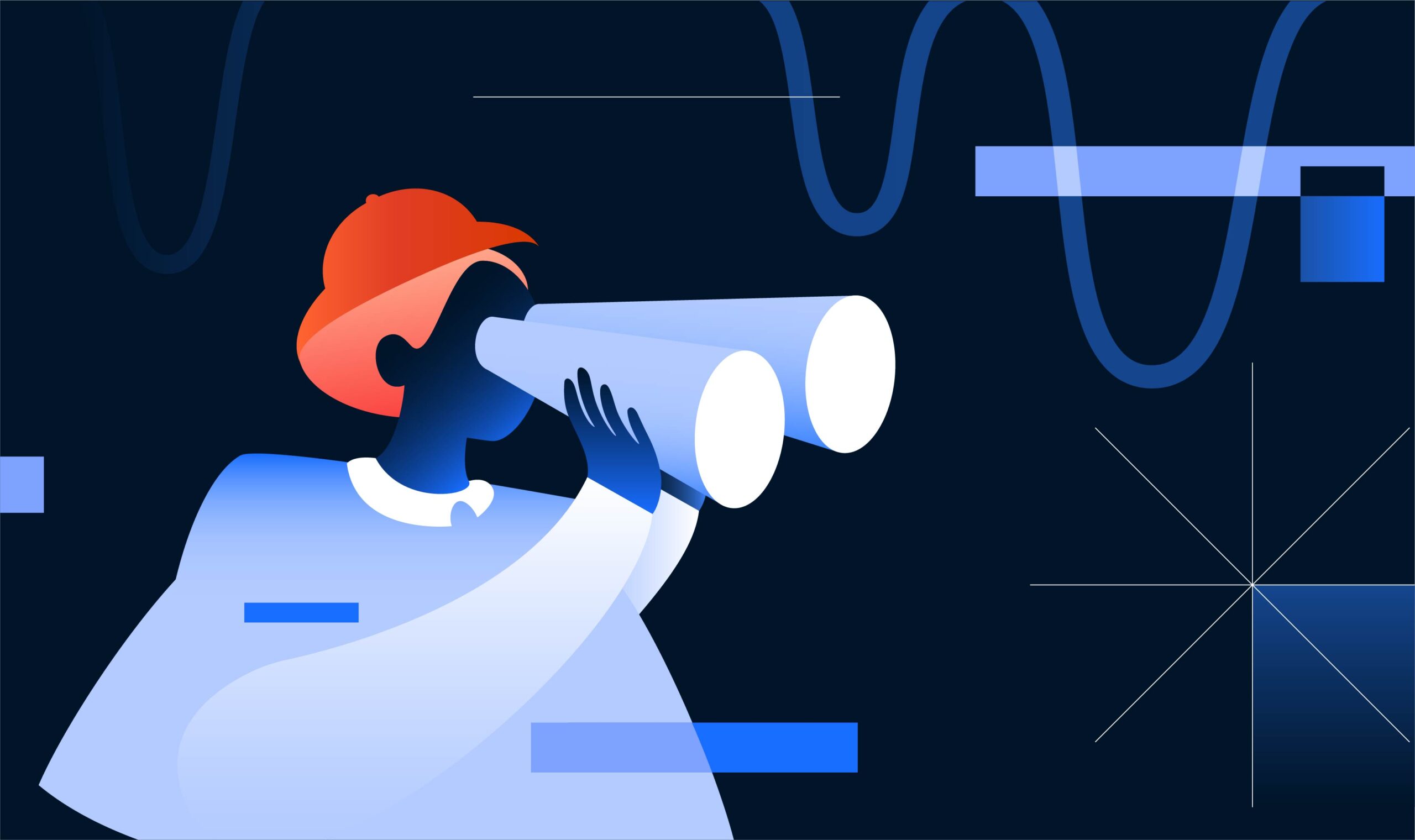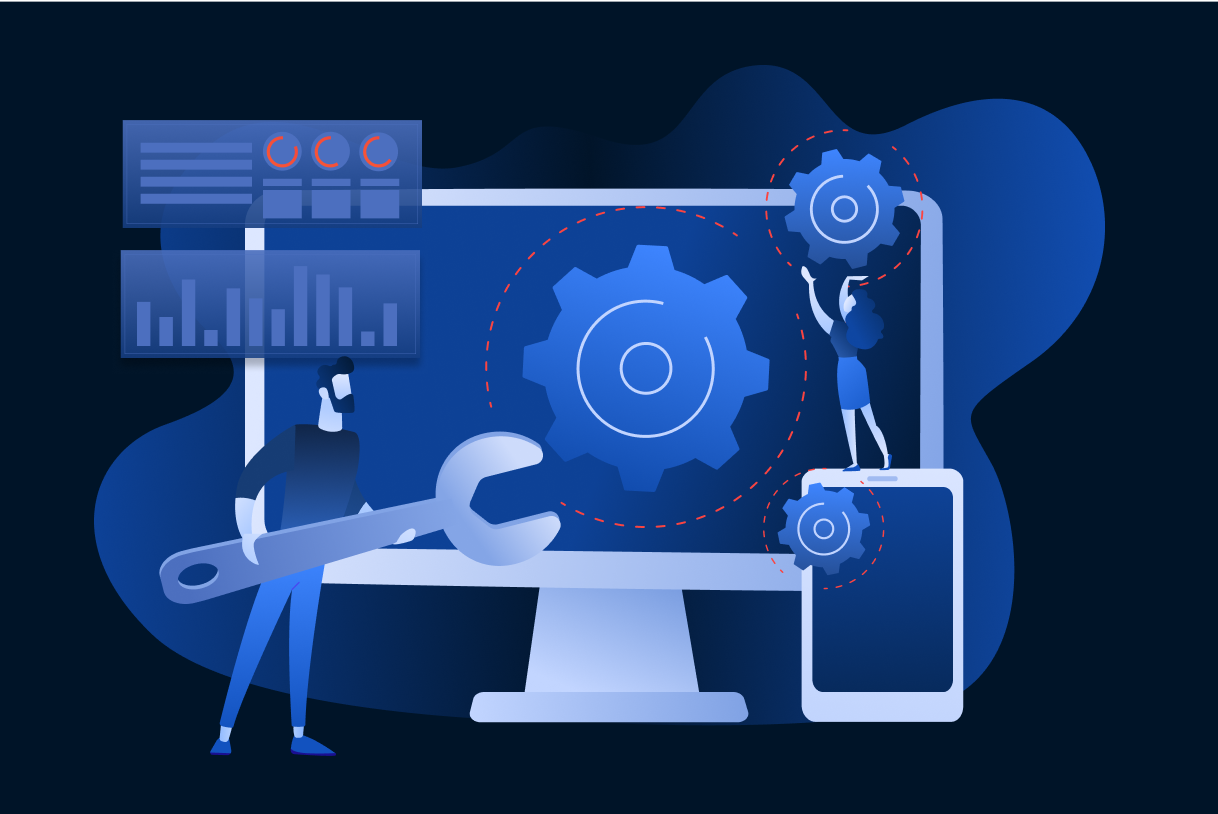1. Learn and understand
The product development process begins with empathising with the user. This is done through qualitative and quantitative research. The goal is to understand the user’s needs, wants and pain points.
To gain this understanding, user interviews are conducted in the form of surveys, focus groups, or observations, and user stories are organised into themes. Journey maps can also be created. It is beneficial to build a close relationship with a group of users at this stage so that you can more easily gather accurate information. A competitor analysis is also beneficial. Research some competitors and create free accounts. Analyse user flows and take screenshots. Make a list of the strengths, weaknesses, and features of the competitor’s product and use it to identify gaps in the market offering.
This phase can take weeks or even months – depending on how long it takes for clear themes to emerge in your users’ feedback. The insights gained during this research-intensive phase are critical to further developing your product roadmap.
2. Define and decide
After some time has passed, patterns should emerge from your research. One or two recurring problems should become evident in different user stories. Once you’ve identified these issues, the next step is to formulate them into hypotheses and choose one to focus your new product or feature on.
To determine the root cause of the problem, a Root Cause Analysis is performed. One useful technique for this is the “5 Whys” technique. The goal is to take a surface-level problem and repeatedly ask why until you reach the underlying cause of the issue. The analysis helps us to make sense of the data.
3. Ideate and prioritise
In the ideation phase of product discovery, you’ll generate new ideas and solutions to problems. During this phase, allow your team to freely exercise their creativity and generate as many ideas as possible through brainstorming or mind-mapping sessions. Ensure that everyone remains open-minded and encourages out-of-the-box thinking. Once you have a sufficient number of ideas, it’s time to begin evaluating them. During the evaluation, you should ask yourself these important questions:- Does this idea effectively solve the problem at hand?
- Is it feasible to implement in practice?
- Is it a distinctive and original solution?
- Will people actually use and benefit from this idea?
After you’ve evaluated your ideas, choose the best one. There are many prioritisation techniques and the right one will help you answer:
- Are we working on the highest business value item?
- Are we delivering the necessary value to customers?
- Does our work contribute to the broader business objectives?
- Can we get this product to the market?

4. Prototype and test
The solutions generated in the previous stage need to be validated. To do this, create an MVP (Minimum Viable Product) and solicit user feedback. The only way to determine whether an idea has enough value to move forward to product delivery is through your users’ responses. It’s crucial to test various iterations and concepts. When creating prototypes, it’s important to keep them as simple as possible, focusing on conveying the overall concept rather than the specifics of the implementation. This way, if an idea doesn’t work, you can quickly move on to the next one. Maintaining an agile approach is key. This stage of the process often repeats several times, allowing you to test multiple iterations and concepts.
There are various methods for prototyping your ideas. Paper prototyping is the simplest and quickest way to create a prototype in the early stages of concept testing. It allows for easy modifications as you gain a deeper understanding of the problem. Digital prototyping, on the other hand, enables you to test detailed interactions and usability. Digital prototypes are more realistic and interactive, making them better suited for testing usability and user flows.
To obtain feedback, conduct rounds of usability testing by asking people to test your design.
Conclusion
To ensure you consistently deliver quality products that address your users’ needs and pain points, it’s crucial to maintain a continuous process of product discovery throughout the product life cycle. By analysing how users interact with and use your product through tools such as Mixpanel and by regularly engaging with users, you will gain a clear understanding of their objectives and know what the right thing to build next is.





